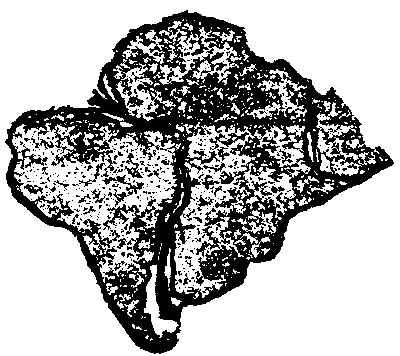 |
Science Frontiers ONLINE No. 37: Jan-Feb 1985 |
|
|
The earth is expanding and we don't know why
Let us taunt the geologists now with an idea that many of them consider to be nonsense.
The Expanding Earth Hypothesis goes back to at least 1933, a time when the Continental Drift Hypothesis was accorded the same sort of ridicule. Now, Continental Drift is enthroned; and ironically many of its strongest proponents are vehemently opposed to the Expanding Earth, ignoring the lessons of history.
The data that suggest that the earth has expanded significantly over geological time come from the pleasant pastime of continent fitting. If one takes the pieces of continental and oceanic crust and tries to fit them together at various times over the past several hundred million years, taking into account the production of crust at the midocean ridges, the fit gets worse and worse as one works backward in time. Great gaps (or "gores") appear between the pieces of crust which geologists believed existed at these periods. (Of course, one can play this puzzle-piece game only at passive continent-ocean boundaries where the oceanic crust has not slid under the continental crust. The South Atlantic is a good place to work.)
These embarrassing, grotesque gaps can be made to disappear almost as if by magic by assuming that the earth was smaller in the past. This seems, on the surface, to be a crazy idea. Why would an entire planet swell up like a balloon? Hugh Owen answers in this way:
"The geological and geophysical implications of such Earth expansion are so profound that most geologists and geophysicists shy away from them. In order to fit with the reconstruction that seems to be required, the volume of the Earth was only 51 per cent of its present value, and the surface area 64 per cent of that of the present day, 200 million years ago. Established theory says that the Earth's interior is stable, an in ner core of nickel iron surrounded by an outer layer that behaves like a fluid. Perhaps we are completely wrong and the inner core is in some state nobody has yet imagined, a state that is undergoing a transition from a high-density state to a lower density state, and pushing out the crust, the skin of the Earth, as it expands."
(Owen, Hugh; "The Earth Is Expanding and We Don't Know Why, "New Scientist, p. 27, November 22, 1984.)
Reference. For more on the Expanding Earth Hypothesis, see category ETL6 in our Catalog: Carolina Bays, Mima Mounds. This book is described here.
 | Relative bad fit of South America and Africa on a globe of modern size is indicated by the black gaps (gores). The black areas disappear on an earth with a diameter 80% of the modern value. |